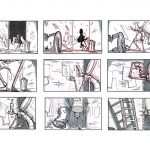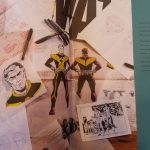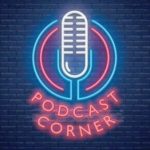This week, rather than write on what we covered in class, I thought I’d summarize an article I read for my Multiliteracies class because I think there’s some useful crossover. The article had to do with strategies for teaching internet literacy.
Perhaps, because it hasn’t been around for very long and is constantly up for reinvention, there isn’t really a “canon” when it comes to teaching internet literacy. However, I’ve recently found one article (albeit, written in 2007) that could be useful for teaching students how to read the internet. Donald Leu, Lisa Zawilinski, Jill Catek, Manju Barerjee, Brian Housand, Yingie Liu and Maurcen O’Neil’s article, “What is New about the New Literacies of Online Reading Comprehension?” provides a helpful model for approaching online literary texts, which includes 5 critical steps:
- Identify important questions—Leu et al. recommend that teachers show students how to come up with a clear set of logical questions to guide their internet inquiry sessions. They also recommend that educators teach students how to phrase their questions correctly or in different ways to prompt more search results.
- Locate information—Teachers must instruct students how to use search engines effectively, what sort of search engines are available for different kinds of research, and prompt them to consider how their search options are often being directed by search algorithms. Provide access to search engines that don’t cater content, such as Duckduckgo.
- Analyze information—Educators must provide students with different strategies for measuring the validity and effectiveness of online material. Some critical questions students can consider is: what is the motivation of this website provider? Are they government funded or do they receive money from my access? What kind of ads do they endorse? What is the quality of the writing or page design like? When was the page last updated?
- Synthesize information—This step is difficult to measure because it largely takes place inside the student, as they internalize or memorize the information. It’s important for teachers to also highlight how this synthesis process is also taking place outside the student in their search history. While the online reader is observing and processing content, the internet is also taking note of their content choices, will influence future search sessions, and will consequentially guide future synthesis.
- Communicate information—While Leu et al. provide very few suggestions for this application section, the next level in internet literacy is composition. Students will learn best how to interpret the information they acquire there if they understand how to manipulate the medium themselves. Simple blog post assignments or collaborative online spaces empower students to contribute to this new literary medium and emphasize its defining quality: the ability to share ideas with a wider audience easily and efficiently.
While this model provides a helpful scaffold for teaching online literacy to new internet explorers, it’s important to note a major fault with Leu et al.’s framework that prevents its applicability for all online reading contexts, namely, that these analysts see the internet primarily as a research tool. Students use the web for a variety of reasons, certainly including research, but also entertainment, shopping and socializing. Indeed, Leu et al.’s narrow view of the internet reveals another one of this medium’s most defining characteristics—it’s penchant for reinvention. Since this article’s publication in 2007, new textual possibilities have been unleashed and the dry reservoir of factual online information has expanded into a thriving metropolis of multiliterary genres, expectations and devices.
As such, moving forward as educators it is important that we develop our own strategies to help our students navigate this wondrous (and sometimes terrifying) new literary landscape, while simultaneously recognizing that these strategies are always up for retrofitting—the landscape itself caught in the constant flux of terraforming.





